This species has been observed on Reunion, Mayotte and Madagascar Islands
This species is very variable in colour but usually can be identified by the large White W-shaped mark on the head One other distinctive element is the white or pale yellow crescent on the rounded posterior margin of the head shield This species,has a very long left caudal lobe which, at its end, ressembles a filament |

|
|
| Showing species characteristics... | Photo Philibert Bidgrain |
|
See more about : Sightening and mating periods
See more about : Biuve fulvipunctata variability in Southwest Indian ocean
Remarks :
Identification confirmed by Nathalie Yonow.
Synonymous : (according Worms)
- Chelidonura conformata Burn, 1966 - Chelidonura mediterranea Swennen, 1961
- Chelidonura fulvipunctata Baba, 1938
Bibliographic data :
The body is black or dark brown and usually speckled with white or pale brown all over (parapodia, upperside and underside). Some specimens also have yellow-orange spots on the anterior margin of the head and caudal lobes or over all the body
Some animals have also a white margin on the posterior end of the posterior shield
There are two mounds of sensory cilia on the anterior edge of the head
The flap araising from th sides of the foot (parapodia) are large but they do not meet in the midline.
It probably feeds on small acoelomate flatworms and has been observed "striking" (though ultimately rejecting) a diurnal Convoluta sp.
In dishes, its egg masses are small, irregular white clumps composed of an irregular string. However, it is likely that they remain sack-like when laid in the field where their sticky surfaces can collect detritus for reinforcement. Hatching occurs in about four days in the laboratory.
This species looks like Mariaglaja. inortata, but M. inortata lacks the white W-shaped mark on the head and the white or pale yellow crescent on the rounded posterior margin of the head shield. Furthermore in M. inortata the parapodia are edged in white, and minute white dots are densely scattered over the outer surface of the parapodia and on the sole of the foot and not on the dorsal surface of the body.
References :
Bill Rudman Seaslug site : Sea Slug Forum : Chelidonura fulvipunctata
Publications :
Baba,K. (1938) Opisthobranchia of Kii, Middle Japan. Journal of the Department of Agriculture, Kyusyu Imperial University, 6(1) : 1-19.
Gosliner, T. M. (1980) Systematics and phylogeny of the Aglajidae (Opisthobranchia: Mollusca). Zoological Journal of the Linnean Society, 68: 325-360.
Zamora-Silva A. & Malaquias M.A.E. (2017). Molecular phylogeny of the Aglajidae head-shield sea slugs (Heterobranchia: Cephalaspidea): new evolutionary lineages revealed and proposal of a new classification. Zoological Journal of the Linnean Society
Other photos of Biuve fulvipunctata :
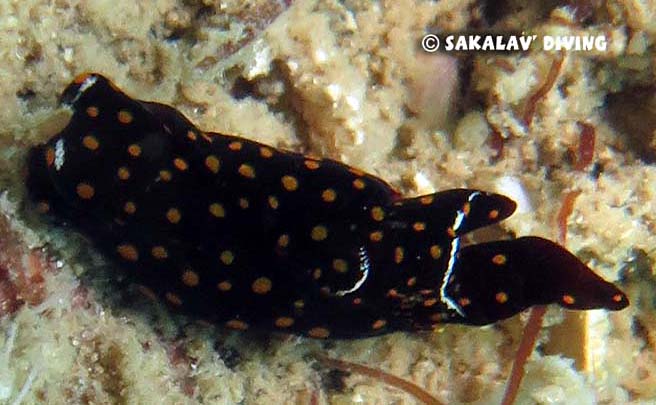 |
Alain-Benoît Rassat Madagascar, Nosy bé, 10 June 2016 |
Philibert Bidgrain In a pool at "Kélonia center" a Marine Turtle Center in Saint Leu. Réunion, 6 May 2009, There are two mounds of sensory cilia on the anterior edge of the head Some specimens have yellow-orange spots all over the body |
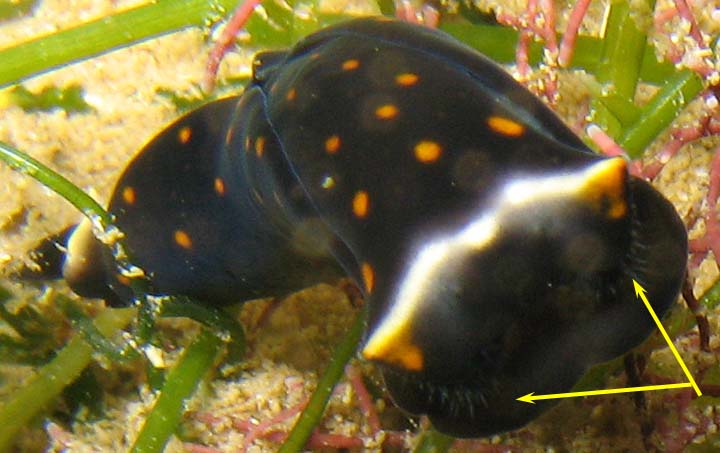 |
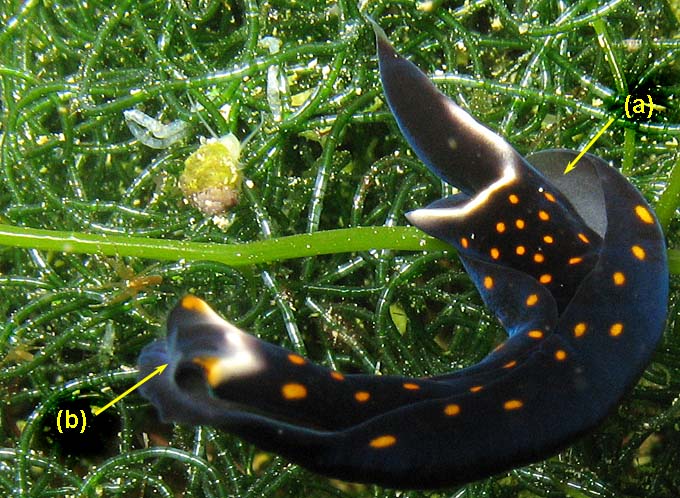 |
(a) Internal side of the parapodia without any ornge spot. (b) The mouth 15 April 2009, size : 15-18 mm |
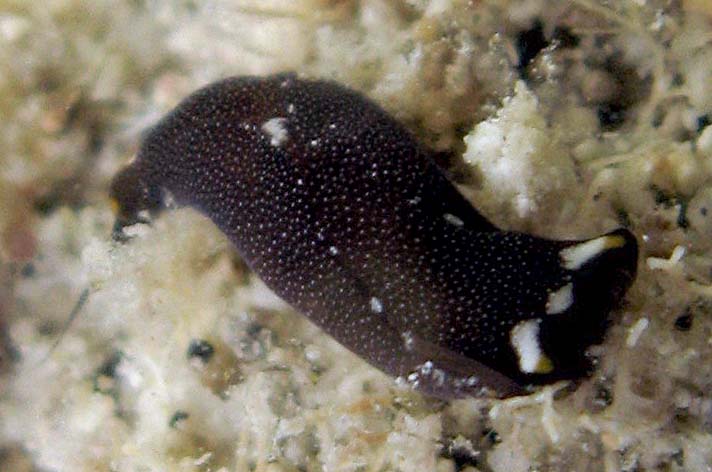 |
Sonia Ribes Beaudemoulin Réunion, Saint Leu lagoon, less 1 m, under a rock, 6 December 2008, size : 10 mm The body is black or dark brown and usually speckled with white or pale brown all over (parapodia, upperside and unsderside) |
Christophe Cadet Réunion, Etang salé lagoon, less 1 m, 26 December 2009, size : 10 mm A strange mottle form with white speckle and orange spots. And of course the large W-shaped mark on the head
|
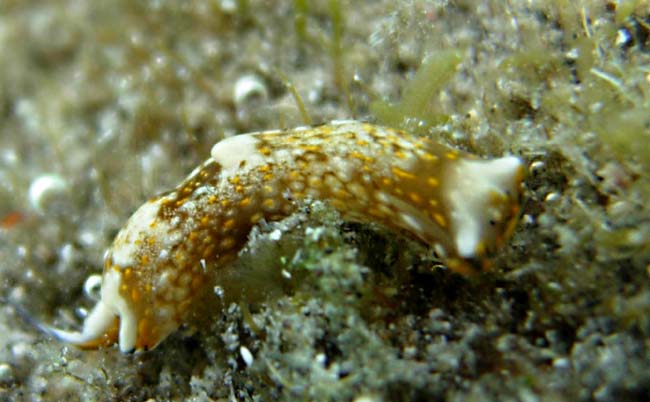 |
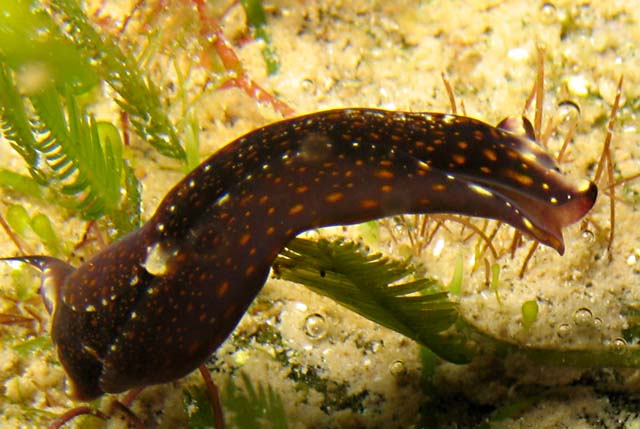 |
Philibert Bidgrain In a pool at "Kélonia center" a Marine Turtle Center in Saint Leu. Réunion, 9 February 2010 , This specimen has small and large yellow-orange spots all over the body and white spots on the parapodial margin
|
Philibert Bidgrain In a pool at "Kélonia center" a Marine Turtle Center in Saint Leu. Réunion 9 February 2010 , A specimen with numerous white speckle... all over the body |
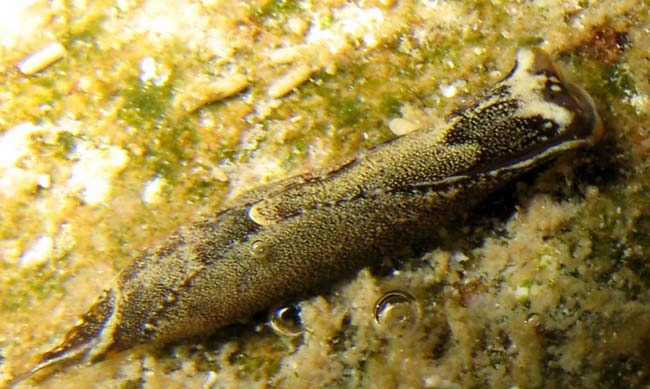 |
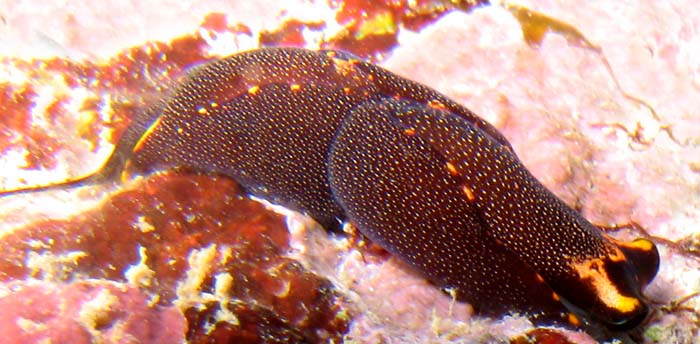 |
Philibert Bidgrain Reunion, La Saline lagoon, less 1 m, 10 April 2010, size : 15-20 mm This species is very variable in colour but usually can be identified by the large white (orange in this specimen!!!) W-shaped mark on the head 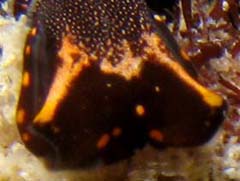 |
Christophe Cadet Réunion, Etang salé, on the rocky coast , less 1 m, 11 November 2010, A specimen with small white dots and large orange spots. And of course the large W-shaped mark on the head
|
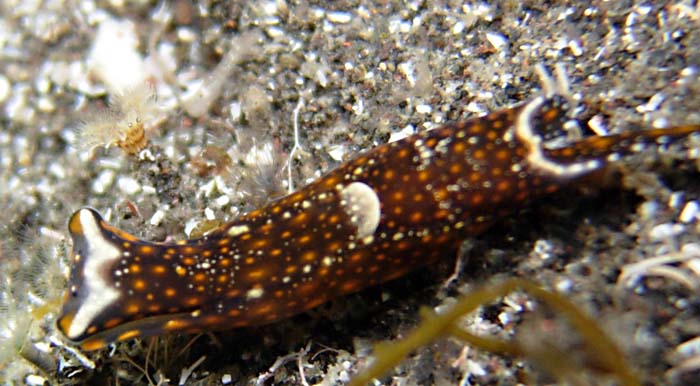 |
Philibert Bidgrain Mayotte, Dzaoudzi, Le Rocher, less 1 m , 20 October 2012, size : 15 mm
A specimen with an incompeted "W" white mark on the head (a) |
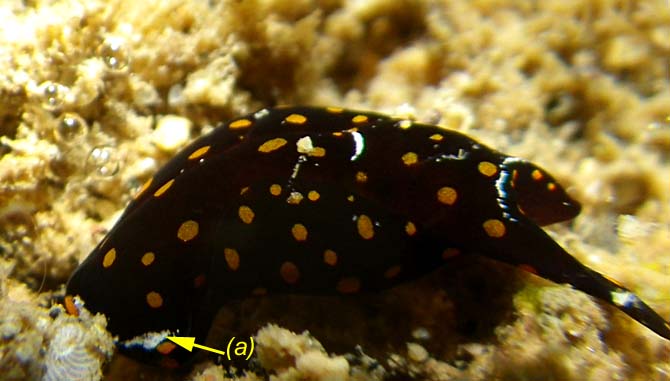 |
More photos from Indian Ocean
See more about : Biuve fulvipunctata variability in Southwest Indian ocean
Reunion, Biuve fulvipunctata speckled with white, at Etang salé, by Christophe Cadet
Mayotte, Biuve fulvipunctata speckled with white, at Moutsoumbatsou, by Matthias Deuss
Reunion, Biuve fulvipunctata speckled with white and orange, at Etang salé, by Christophe Cadet
Reunion, a mottle form of Biuve fulvipunctata, at Etang salé, by Christophe Cadet